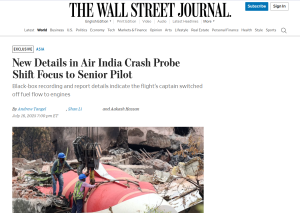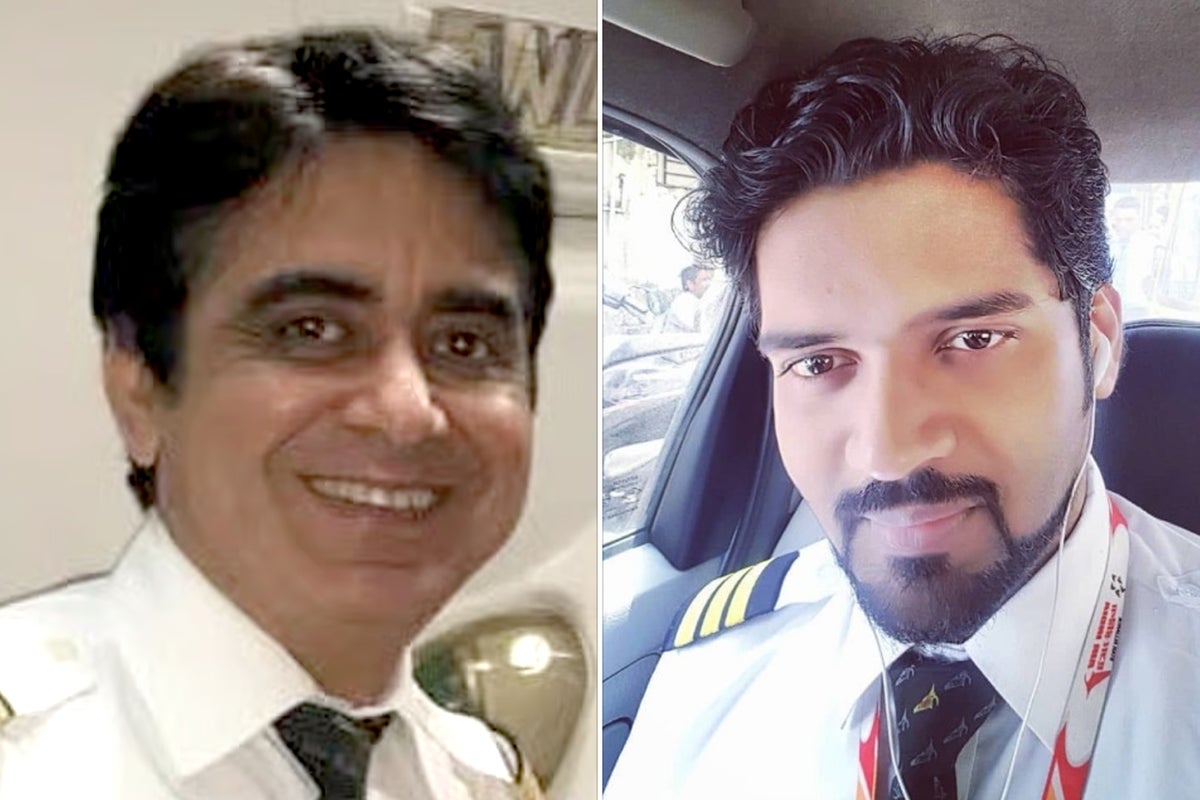New Delhi – The Federation of Indian Pilots has taken a strong stance as Indian Pilots Body Slams US Media over recent reporting on the Air India flight crash in Ahmedabad. The organization has vehemently condemned allegations suggesting pilot error in the movement of fuel control switches that led to the tragic incident. This controversy has emerged following the release of preliminary investigation findings that have been misinterpreted by international media outlets.
CS Randhawa, the Federation of Indian Pilots chief, led the charge when Indian Pilots Body Slams US Media reporting, emphasizing that the preliminary probe report released by the Aircraft Accident Investigation Bureau did not place blame on any pilot. The strong response reflects the aviation community’s concern about premature conclusions being drawn from incomplete investigations.
Preliminary Investigation Findings and Media Misinterpretation

The Aircraft Accident Investigation Bureau’s preliminary report revealed crucial details about the AI171 Boeing 787 Dreamliner crash that occurred shortly after takeoff in Ahmedabad. The investigation found that both fuel control switches on the ill-fated aircraft were moved from the ‘run’ position to the ‘cut off’ position after takeoff, leading to engine shutdown and subsequent crash.
However, when Indian Pilots Body Slams US Media coverage, the primary concern centers on the mischaracterization of these findings. The AAIB report included cockpit conversation recordings between Captain Sumeet Sabharwal and First Officer Clive Kunder, where one pilot asked, “Why did you cut off fuel?” and the other replied, “I did not do so.” Crucially, the report neither identified which pilot said what nor implied whether the fuel cut-off was deliberate or accidental.
Media Report Allegations and Professional Response

International media reports have suggested that black-box recordings indicate the captain turned off switches controlling fuel flow to the engines, citing unnamed sources familiar with officials’ early assessment. This interpretation has prompted the strong reaction where Indian Pilots Body Slams US Media for drawing premature conclusions without proper investigation completion.
Also Read: Air India Finds ‘No Issues’ In Boeing 787’s Fuel Control Switches Critical Inspection
Randhawa emphasized that neither the official report nor the Civil Aviation Minister had indicated pilot error, urging people to avoid commenting on unverified reports and wait for detailed investigation results. The Federation’s position reflects professional aviation standards that require thorough investigation before assigning responsibility for accidents.
Historical Context and Technical Analysis
When Indian Pilots Body Slams US Media reporting, the Federation draws parallels with previous incidents to provide context. Randhawa referenced the January 17, 2019 ANA NH985 incident where both engines shut down during landing when the pilot selected thrust reversers, without any pilot movement of fuel control switches. This comparison suggests potential technical malfunctions rather than pilot error.
The Federation chief specifically highlighted concerns about Throttle Control Malfunction Accommodation (TCMA) systems, suggesting that the current incident might represent a repetition of TCMA malfunction. This technical perspective adds credibility to the position when Indian Pilots Body Slams US Media for oversimplifying complex aviation incidents.
Investigation Committee Composition Concerns
A significant aspect of why Indian Pilots Body Slams US Media involves concerns about investigation committee composition. Randhawa raised objections to the absence of pilots from the investigation panel, arguing that practical aviation experience is essential for proper accident analysis. The Federation has urged the Civil Aviation ministry to reconstitute the investigation panel to include pilots, engineers, and air safety experts.
This call for inclusive investigation reflects professional standards where Indian Pilots Body Slams US Media for potentially influencing public opinion without comprehensive technical analysis. The Federation’s stance emphasizes the importance of having aviation professionals involved in determining causes of aircraft accidents.
Pilot Credentials and Professional Standards


The incident involved highly experienced aviation professionals, with Captain Sumeet Sabharwal, 56, having 15,638 total flying hours, including 8,596 hours on Boeing 787 aircraft. First Officer Clive Kunder, 32, had 3,403 flying hours, with 1,128 hours as co-pilot on Boeing 787 jets. These credentials demonstrate the professional competence of the crew involved.
When Indian Pilots Body Slams US Media coverage, the Federation emphasizes that Indian pilots are among the world’s best, challenging attempts to prematurely assign blame without proper investigation. This professional pride reflects the aviation community’s commitment to maintaining high standards and proper investigation procedures.
Technical System Analysis Requirements
The Federation’s response when Indian Pilots Body Slams US Media includes calls for thorough Boeing 787 system analysis. Randhawa noted that Boeing has not issued directives requiring TCMA function checks across aircraft fleets, despite potential system-related issues. This technical perspective suggests that aircraft manufacturers should take proactive steps to address potential system vulnerabilities.
The emphasis on technical analysis when Indian Pilots Body Slams US Media demonstrates the complexity of modern aviation systems and the need for comprehensive investigation before drawing conclusions about pilot performance or system failures.
Professional Integrity and Media Responsibility
The Federation’s strong stance when Indian Pilots Body Slams US Media reflects broader concerns about media responsibility in reporting aviation incidents. Randhawa emphasized that he deliberately avoided providing opinions to international media outlets, viewing their approach as potentially biased toward predetermined conclusions.
This professional approach when Indian Pilots Body Slams US Media highlights the importance of maintaining investigative integrity and avoiding premature public statements that could influence ongoing investigations or damage professional reputations without proper evidence.
Final Statement
The controversy surrounding the Air India crash investigation demonstrates the complex relationship between media reporting and aviation safety analysis. When Indian Pilots Body Slams US Media coverage, it reflects genuine concerns about professional standards, investigation integrity, and the importance of thorough technical analysis before assigning responsibility for aviation accidents. The Federation’s response emphasizes the need for comprehensive investigation involving qualified aviation professionals to ensure accurate determination of incident causes and prevention of future occurrences.

